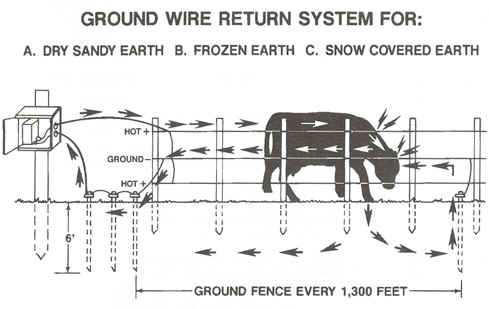
Electric Fence Charger / Energizer Grounding systems explained
Share
Electric Fencing 101: Grounding
“Why are my animals pushing my electric fence? It was working fine in the spring, and the energizer is still clicking.”
Morgan Renner, Wyoming and Montana Territory Manager for Gallagher, one of the largest electric fencing companies in the world, says this may be the most common question he hears. The problem can usually be solved by checking the most overlooked component of electric fencing: how the system is grounded.
He tells his students at the many hands-on clinics he conducts throughout the west, “There are three things to remember about your electric fence: (1) Grounding, (2) Grounding and (3) Grounding!”
Morgan Explains
Electric Fence Charger Grounding
All energizers provide a pulse of energy that originates from their ‘hot’ terminal then travels down the fence line on a charged or ‘hot’ wire. Most users understand this aspect of electric fencing. It’s fairly obvious that the hot wires can’t be touching a steel post or laying on the soil surface. What’s not so obvious is that in the instant when an animal comes into contact with that charged wire, its body contains that energy but is not shocked… yet!
In order to provide a shock and thus the respect for the fence, the energy must travel out of the animal’s feet, through the soil, into the energizer’s ground rods, then into the energizer’s ground terminal. At that point, the circuit has been completed, and the animal receives the shock. What I have described is an “all-hot” electric fence, shown below:

